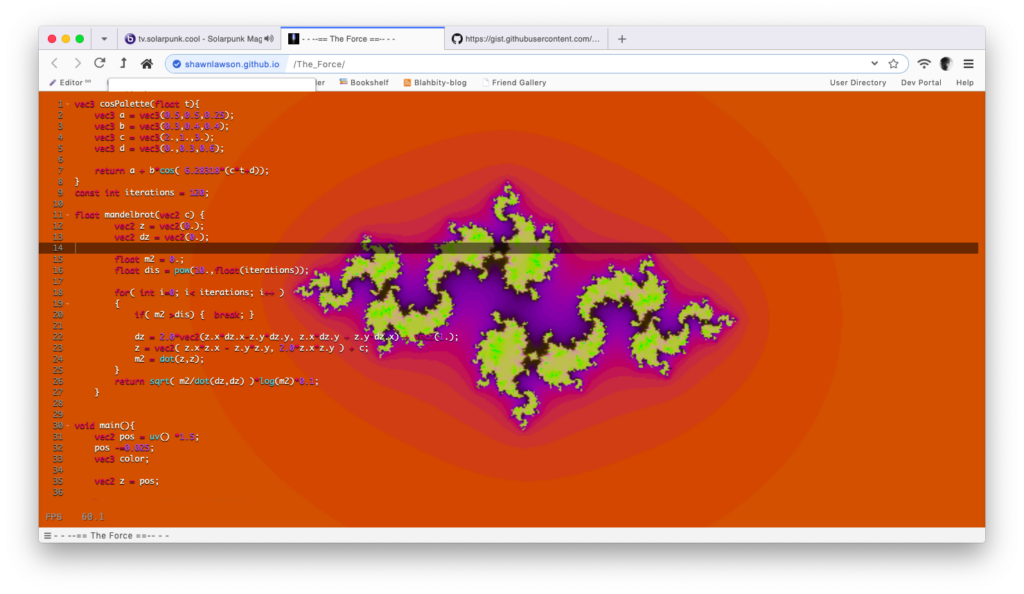Hanging out with the Solarpunk Magic Computer Club, listening to solquemal teach us about fractals and shaders.

GLSL
vec3 cosPalette(float t){
vec3 a = vec3(0.5,0.5,0.25);
vec3 b = vec3(0.3,0.4,0.4);
vec3 c = vec3(2.,1.,3.);
vec3 d = vec3(0.,0.3,0.6);
return a + b*cos( 6.28318*(c*t+d));
}
const int iterations = 120;
float mandelbrot(vec2 c) {
vec2 z = vec2(0.);
vec2 dz = vec2(0.);
float m2 = 0.;
float dis = pow(10.,float(iterations));
for( int i=0; i< iterations; i++ )
{
if( m2 >dis) { break; }
dz = 2.0*vec2(z.x*dz.x-z.y*dz.y, z.x*dz.y + z.y*dz.x) + vec2(1.);
z = vec2( z.x*z.x - z.y*z.y, 2.0*z.x*z.y ) + c;
m2 = dot(z,z);
}
return sqrt( m2/dot(dz,dz) )*log(m2)*0.1;
}
void main(){
vec2 pos = uv() *1.5;
pos -=0.025;
vec3 color;
vec2 z = pos;
float v = 0.;//sin(time*.2)*0.2;
vec2 c = vec2(-0.79 +v ,0.19);
float an = atan(pos.x,pos.y);
//JULIA SET
float t = 0.;
for( int i = 0 ; i < 100; i ++){
c.x -= 0.012;
vec2 nz = vec2(z.x*z.x - z.y*z.y, 2. * z.x *z.y ) + c;
float m = dot(nz,nz);
if (m>300.0) break;
z = nz;
t += 1./100.;
}
// t -= mandelbrot(pos);
color += cosPalette(t);
gl_FragColor = vec4(color,1.);
}
